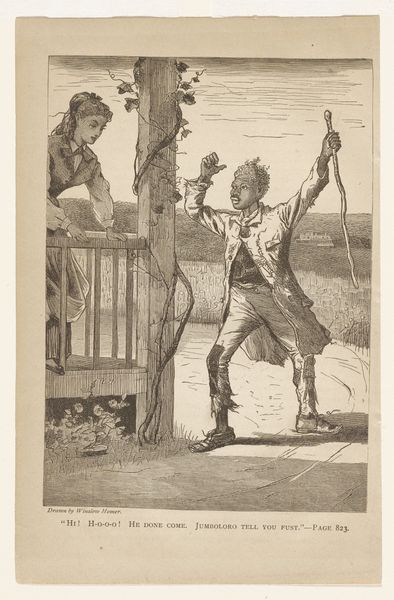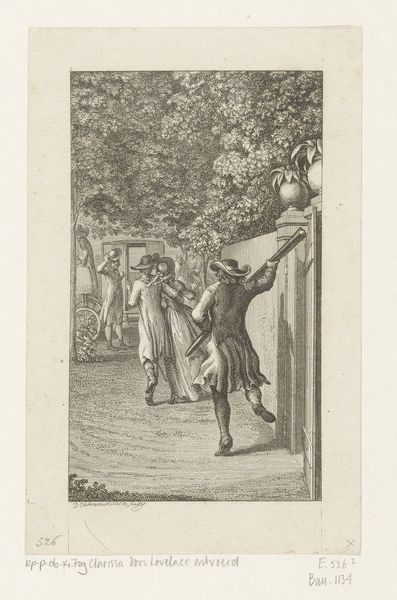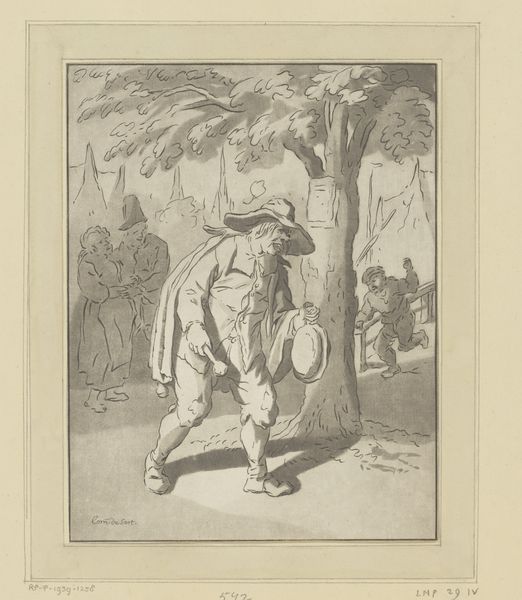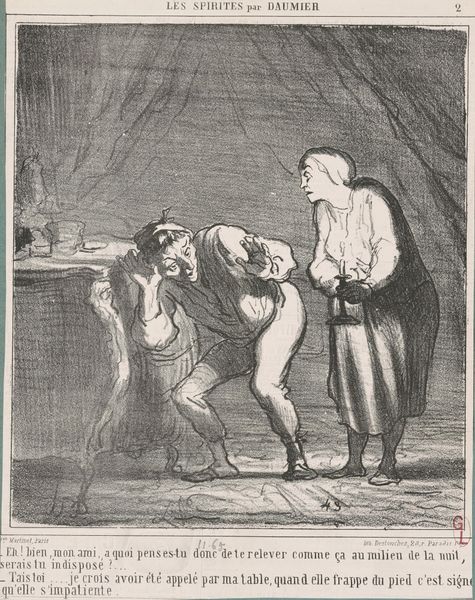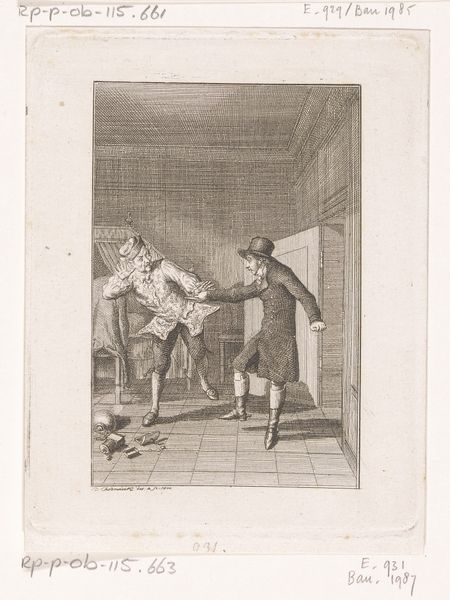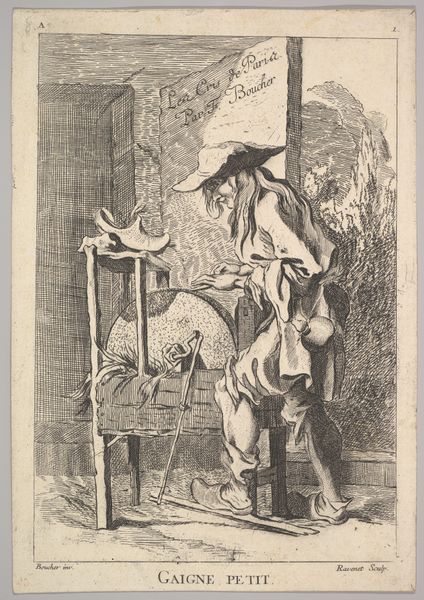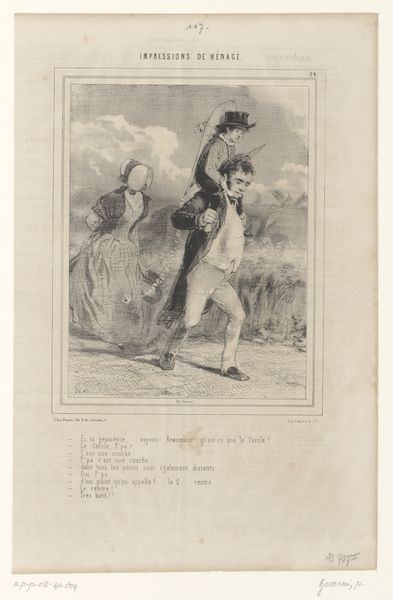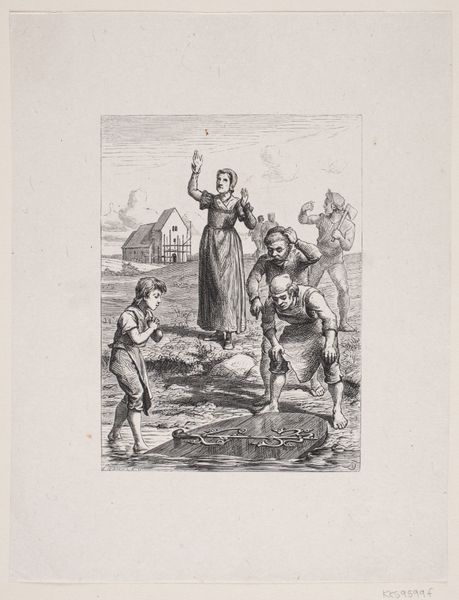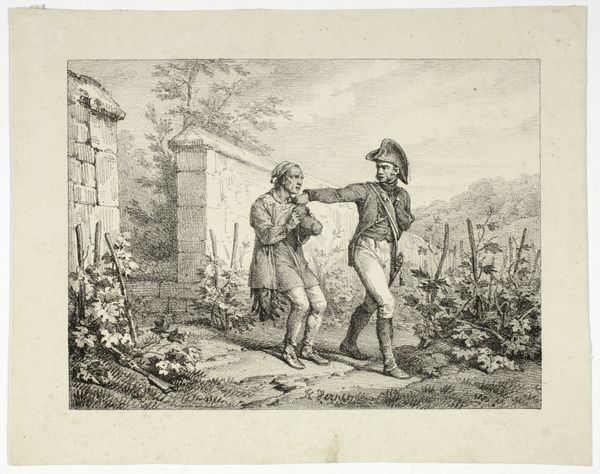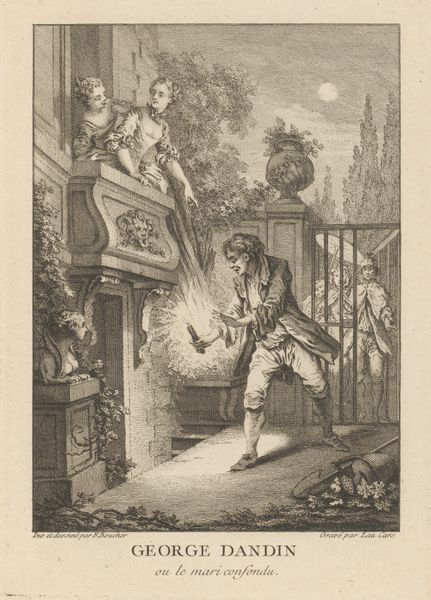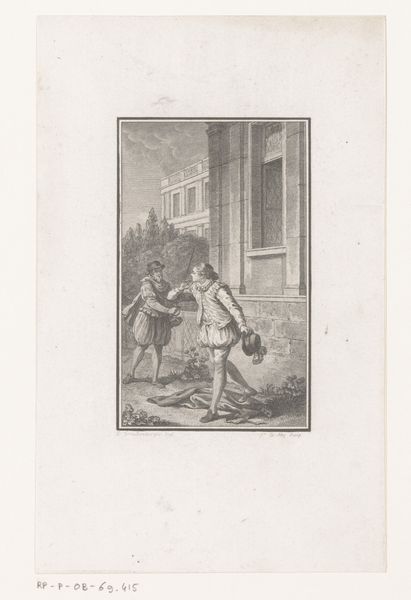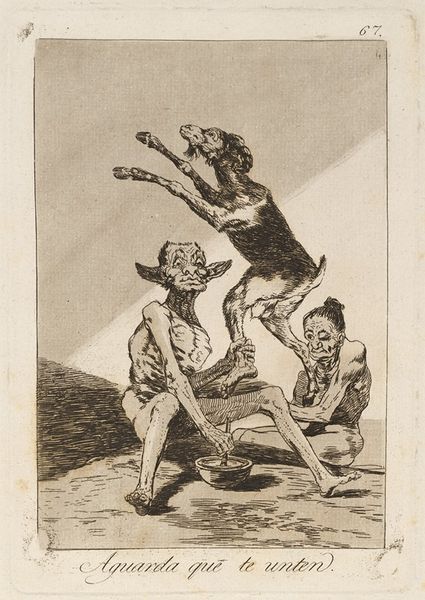
"Hi! Ho-o-o! He Done Come. Jumbolor Tell you Fust" (The Galaxy, An Illustrated Magazine of Entertaining Reading, Vol. VII) 1869
0:00
0:00
drawing, print
#
drawing
# print
#
genre-painting
#
history-painting
Dimensions: image: 6 7/8 x 4 7/8 in. (17.5 x 12.4 cm) sheet: 9 5/16 x 6 in. (23.7 x 15.3 cm)
Copyright: Public Domain
Curator: Winslow Homer's print, dating back to 1869, titled "Hi! Ho-o-o! He Done Come. Jumbolor Tell you Fust", is certainly… striking. Editor: It's a scene of a Black man gesturing excitedly, telling a white woman something. The title is… troubling, with its dialect and caricature. What are your thoughts? How should we approach discussing such an image? Curator: Exactly. We can't shy away from the uncomfortable truths it reveals. Homer created this image in the context of Reconstruction. Look closely: how does he depict the Black figure in relation to the white figure? Is there power being conveyed in posture, garment, setting? Editor: Well, the white woman is up on a porch, looking down at him. And his clothes are torn. It definitely seems to play into a specific racial and social hierarchy, one where whiteness and wealth are positioned as superior. Curator: Precisely. And the minstrel-style dialect in the title reinforces harmful stereotypes. Consider what it means to visually represent someone using demeaning language. How does that dehumanize them? It served to justify systemic inequality and oppression. But, does this historical understanding allow for any artistic merit in Homer's work or are we only left with perpetuation? Editor: I think confronting these harmful portrayals is important to understand art’s role in perpetuating stereotypes, even if unintentionally. It's uncomfortable but necessary. Perhaps seeing this piece with a critical eye lets us analyze the role of these stereotypes, and hopefully deconstruct them. Curator: Agreed. By dissecting this image and acknowledging the context, we resist erasing the complexities of history and engage in necessary critical reflection. Let us keep exploring together, keeping ethics as a main guiding force.
Comments
No comments
Be the first to comment and join the conversation on the ultimate creative platform.
